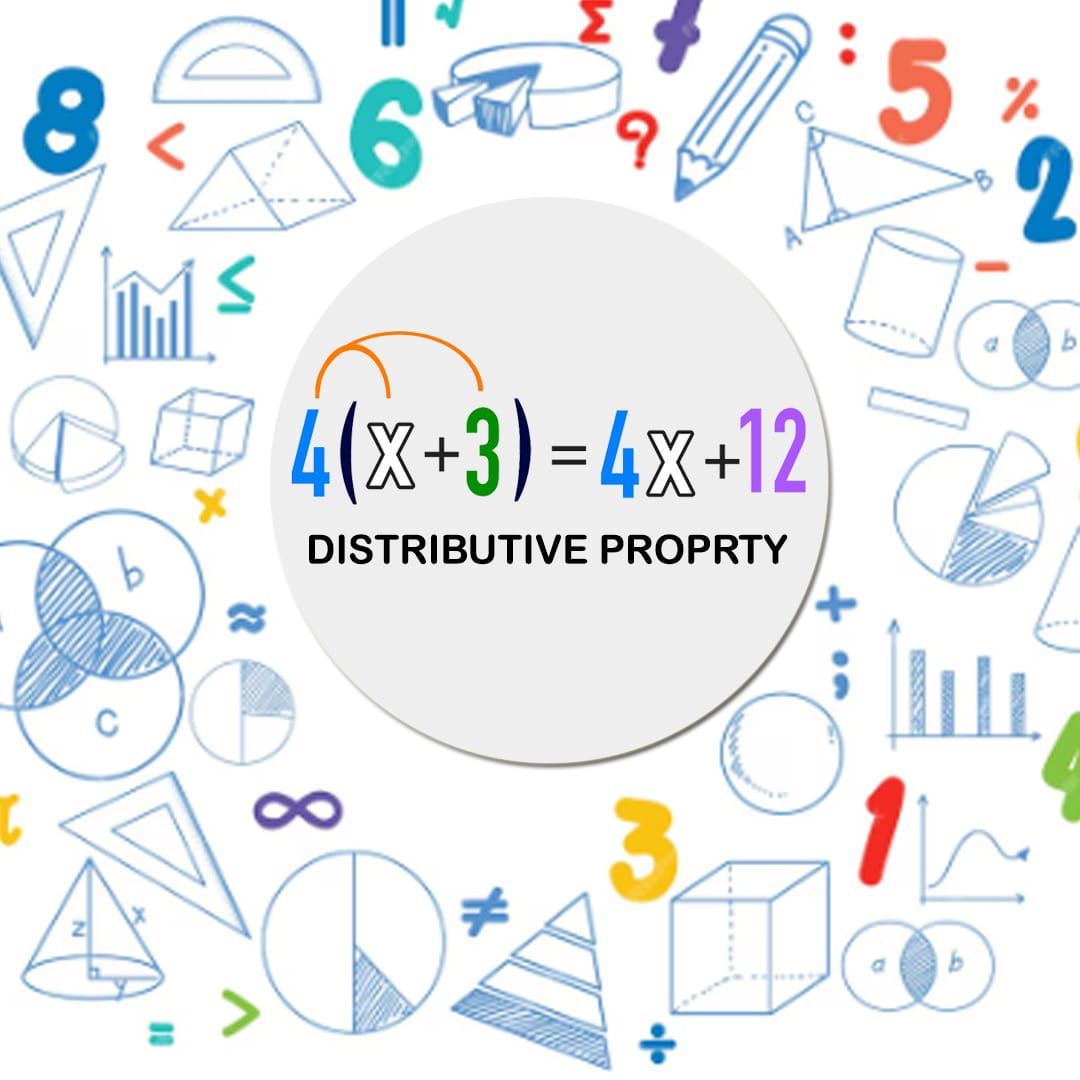Please enter the code we just sent to whatsapp 91-11-46710500 to proceed
Didn't Receive OTP?

The distributive property is a math rule that connects multiplication with addition or subtraction. Using the rule, you can multiply a number by a group of numbers that are added or subtracted. The property allows you to solve the expression by distributing the multiplication over each number within the brackets.
Formula:
a × (b + c) = (a × b) + (a × c)
or when subtraction is involved,
a × (b - c) = (a × b) - (a × c)
This rule is very helpful in mental math, algebra and everyday problem-solving.
Here’s how it looks:
a × (b + c) = (a × b) + (a × c)
a × (b - c) = (a × b) - (a × c)
‘a’is the multiplier, outside the bracket.
‘b’ and ‘c’ are the numbers inside the brackets.
+ and – mean addition and subtraction.
In math,it helps:
break down big numbers into smaller parts.
make mental calculations faster.
Simplify complex expression in algebra.
Solve word problems involving multiplication with addition or subtraction.
1. Distributive property of multiplication over addition:
Distritbute the outer term to the inner term.
Combine the like terms.
Solve the equation.
3 (7 + 4) = (3 x 7) + (3 x 4)
= 21 + 12
= 33
2. Distributive property of multiplication over subtraction:
5 (9 - 6) = (5 x 9) – (5 x 6)
= 45 – 30
= 5
3. Distributive property with variables (algebra):
4 (x - 3) = 20
4x – (4 x 3) = 20
4x – 12 = 20
4x = 20 + 12
x = 32 /4
x = 8
The distributive property comes in handy once you begin learning algebra either in middle school or later.
= 5 × 5 = 25
Using the distributive law:
= (5 × 2) + (5 × 3)
= 10 + 15
= 25
Imagine, you are going shopping with a friend. You both want to buy 3 notebooks and 2 pencils. Notebooks cost ₹20, and pencils cost ₹5.
Instead of computing separately:
Notebooks=3×20= ₹60
Pencils=2×5= ₹10
Total=₹70
You can use distributive property:
Total cost = (3 × ₹20) + (2 × ₹5)
= ₹60 + ₹10
= ₹70
Distributive property applied at a stationery store!
Example: 7 × 16
The number sixteen can be split into 10 + 6.
7 × 16 = 7 × (10 + 6)
=(7 × 10) + (7 × 6)
= 70 + 42 = 112
No calculator needed!
Show arrays, grouping of objects, color-coded parts of the equation.
Matching games where kids match equivalent expressions
(for example, 5 × (2 + 3) matches to 5 × 2 + 5 × 3).
Real-life situations about sharing candy, shopping for items, or measuring things.
Numbers less than 10 work best for building confidence.
Remember to multiply every term inside the brackets.
When subtraction is involved ,make sure the negative sign is correctly applied.
The distributive property applies to multiplication over either addition or subtraction, not division.
The distributive property is a handy trick which makes solving equations and problems easy. Whether you're multiplying numbers or solving algebraic expressions, knowing how to distribute the multiplication across addition or subtraction is a skill every student should have.
Understanding the distributive property and applying the formula and practicing with examples, will boost the children’s confidence and accuracy in math.
So next time you see an equation 8 x ( 6 + 2 ), act like a math pro and use the distributive property!
Alpha Math offers a game-based learning experience with a unique four-step approach to mastering every concept in math. Schedule a Free Class Now